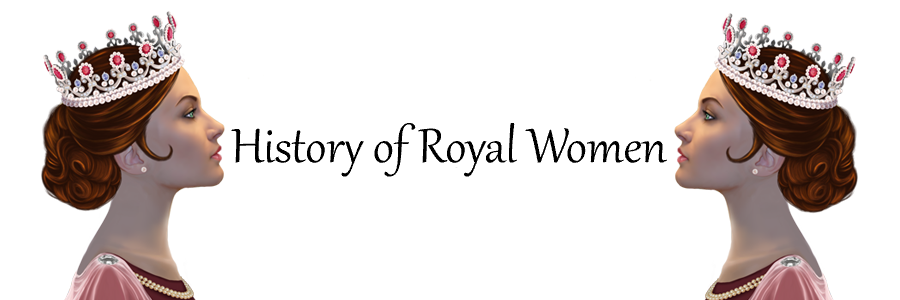
Queen Sālote and her daughter-in-law had been in London for two weeks when it was finally coronation day on 2 June 1953.
She and Mataʻaho would not be travelling together on that day and would also not be seated together in Westminster Abbey as Mataʻaho had a seat in the stands.1 Mataʻaho left the house at 7 a.m. in a car provided by the British Council, while Queen Sālote was set to leave an hour later. She wore a long dress and a named fine-mat (possibly Lālanga-‘a-‘Ulukilupetea), a mantle, her British honours and in her hair, she wore a comb with lav’i tavaki (tropical bird feathers indicating her chiefly rank).2 Queen Sālote was driven to Buckingham Palace, where she transferred to a carriage, which she shared with the Sultan of Kelantan.
Queen Sālote’s seat was in one of the constructed galleries, which looked directly down to the coronation chair. She was one of the first to arrive and watched as people arrived. Queen Sālote later wrote, “My heart was deeply touched by being a witness of such a great occasion, with its dignity and rituals. It was a religious ceremony, with all its stateliness.[…] The things that warmed me most were the moment the Archbishop announced that she was the rightful sovereign and the sound of the voice of dear young Queen making her vows.”3
She added, “When the Queen and her husband moved forward to receive the Sacrament, her crown was removed. No one who took part in that stately ceremony will ever forget the expression on the Queen’s face. An inner glow emanated from her features, and although she was tired, a new strength radiated from her. And no wonder, for she was blessed by millions and warmth came from the people to support her as she accepted the responsibilities that were laid upon her. The solemnity of the occasion touched everyone, quite apart from its glory and beauty. The coming together of nation, land, and church in supporting the Crown was clear.”4
After the ceremony, Queen Sālote was led to an annexe in the Abbey, and she was offered a light meal of tea, sandwiches and cake. During this time, it had begun to rain, and it continued to fall as Queen Sālote entered the carriage for the procession back to the palace. A policeman asked her if she wanted the hood of the carriage put up, but she “was so caught up in the warmth of the people and the feelings of grace flooding my heart from the ceremony that I could not bear to be excluded from any part of that day, good or bad. Everything on that day was a treasure. So I told the policeman to leave the hood of our carriage down. I did not think to ask the chief (the Sultan of Kelantan), and he maintained silence with good grace. I apologized to him a few days later, and he accepted my apology gladly. That day, we were both saturated with rain, but we were happy.”5
The images of a smiling Queen Sālote in her carriage in the pouring rain only added to her popularity with the British people. She arrived at her British residence around 6 p.m. and was immediately led to her room to take off her wet clothes for fear that she would fall ill, but fortunately, this did not happen. She wrote, “I was grateful to the people and the newspapers for praising me for riding in the rain, and I am honoured by their attention, but it is the same to me whether I was noticed or not. I was only happy because of the happenings of the day and the warmth that the people felt for their sovereign.”6
On her return journey, she said during an interview, “The coronation was a great occasion, and the memory of it will never die. Although I got a good soaking, but I thoroughly enjoyed it.”7
During that night, journalists carrying flowers came to inquire whether Sālote had caught a chill and by the morning, the house was surrounded. That evening, Queen Sālote attended a coronation dinner for 500 guests, and she was seated by Sir Winston Churchill and his wife. She greatly admired him and “returned home very happy.”8
Activities continued over the following days, and Queen Sālote laid a wreath at the cenotaph, she attended the Coronation Thanksgiving Service at St. Paul’s Cathedral and Trooping the Colour. She also attended several garden parties at Blenheim Palace and Lambeth Palace.
From 17 June, Mataʻaho and Sālote went on a two-week tour of Scotland, the Isle of Man and Ireland. The Queen was eventually so fatigued that Mataʻaho filled in for her at the planting of a commemoration oak tree in Windsor Great Park. The trip wasn’t quite over yet, and they then travelled to Paris and Rome, where she and Sālote had an audience with the Pope. Sālote received a gold medal from the Pope in memory of the visit, while Mataʻaho received a bronze medal.9 The last stop was Naples before the royal party boarded the Orontes on 23 July.
The trip of a lifetime was over.
- Queen Sālote of Tonga: The Story of an Era 1900–1965 by Elizabeth Wood-Ellem p.242
- Queen Sālote of Tonga: The Story of an Era 1900–1965 by Elizabeth Wood-Ellem p.242
- Queen Sālote of Tonga: The Story of an Era 1900–1965 by Elizabeth Wood-Ellem p.243
- Queen Sālote of Tonga: The Story of an Era 1900–1965 by Elizabeth Wood-Ellem p.243
- Queen Sālote of Tonga: The Story of an Era 1900–1965 by Elizabeth Wood-Ellem p.244
- Queen Sālote of Tonga: The Story of an Era 1900–1965 by Elizabeth Wood-Ellem p.244
- Youtube
- Queen Sālote of Tonga: The Story of an Era 1900–1965 by Elizabeth Wood-Ellem p.245
- Queen Sālote of Tonga: The Story of an Era 1900–1965 by Elizabeth Wood-Ellem p.247

Be the first to comment